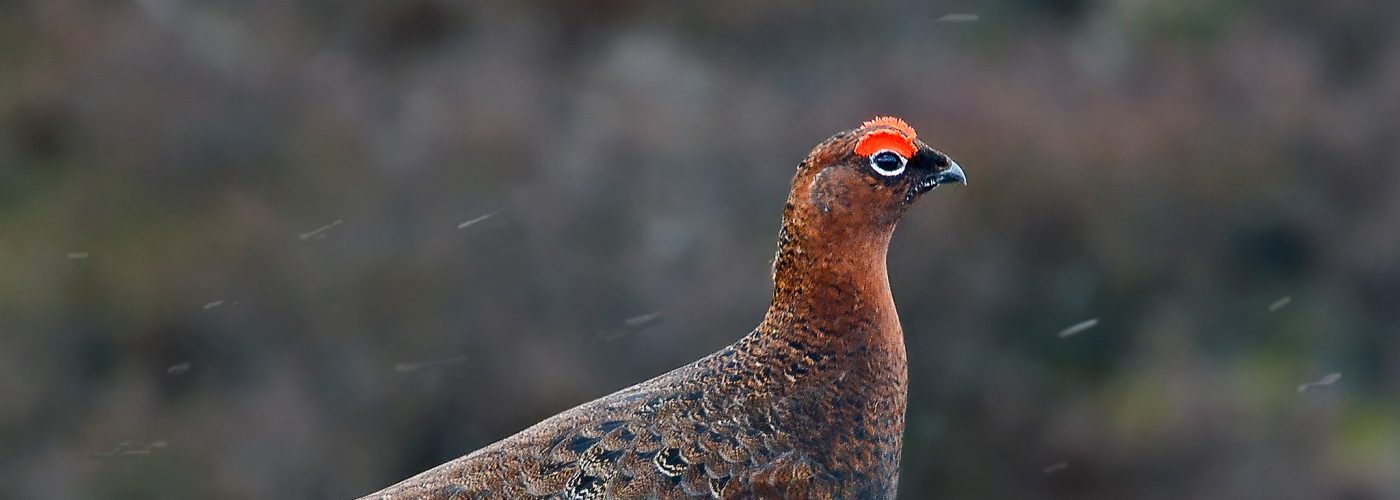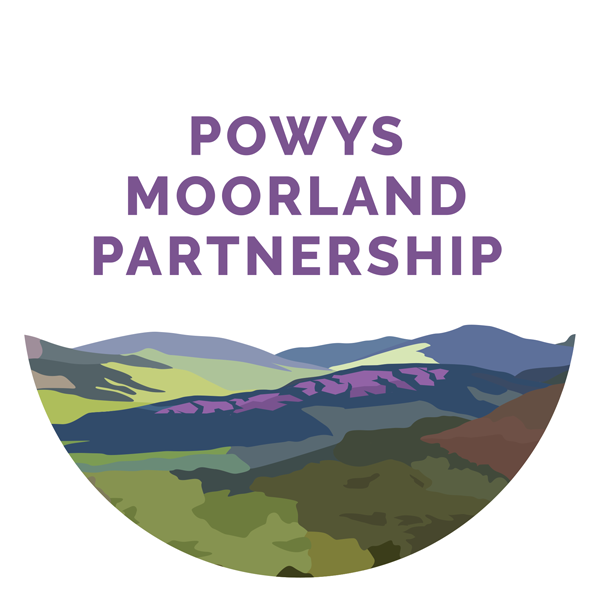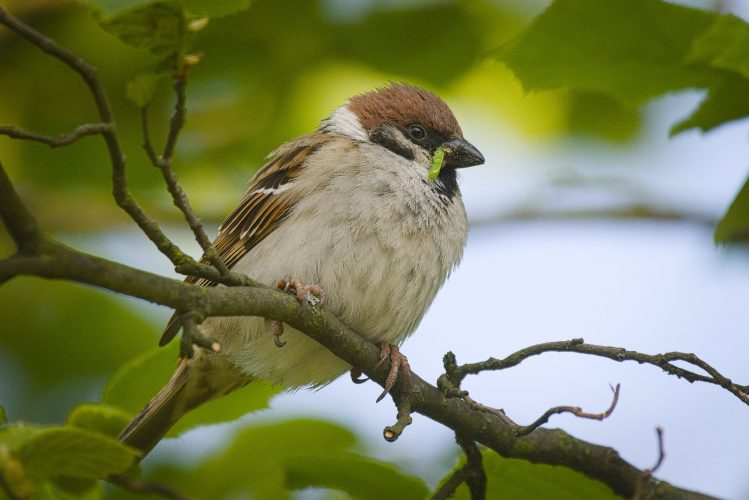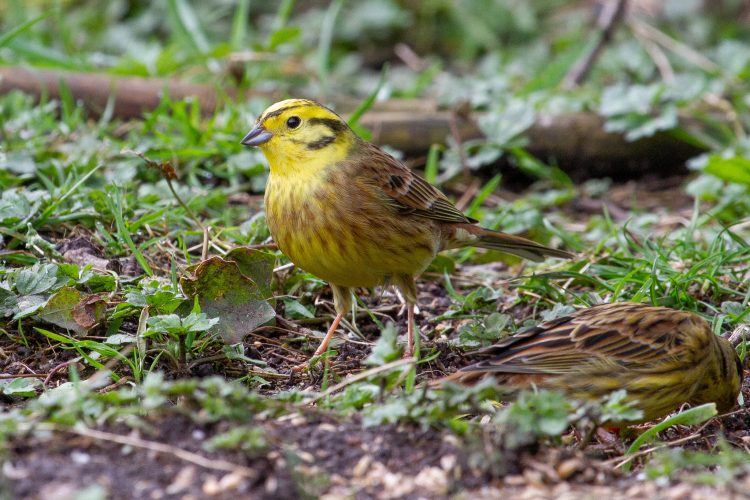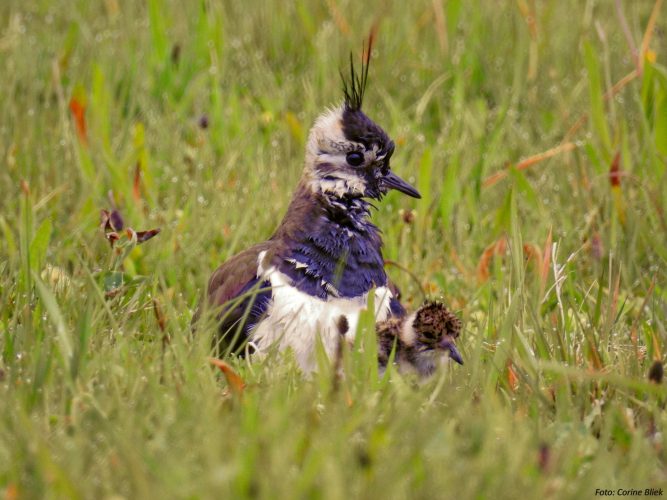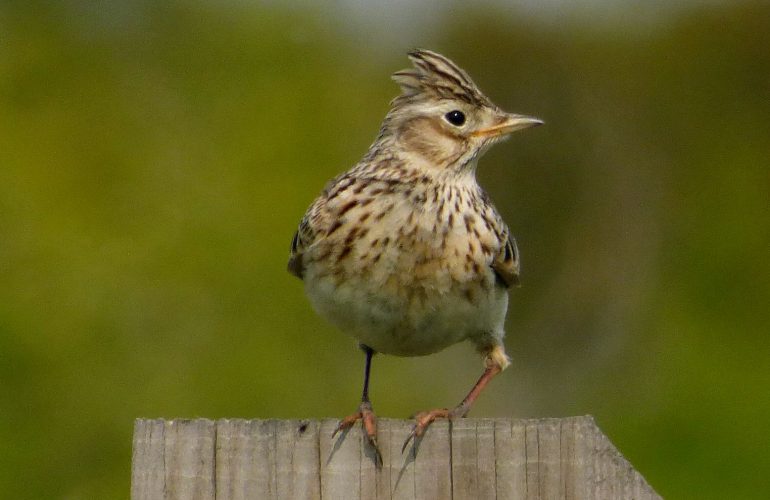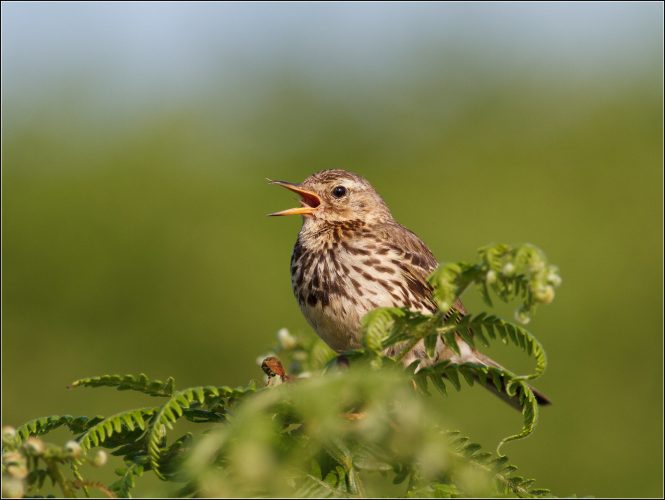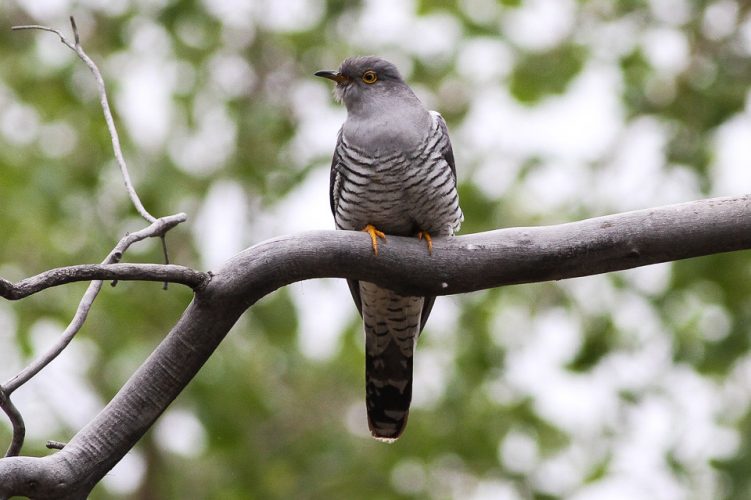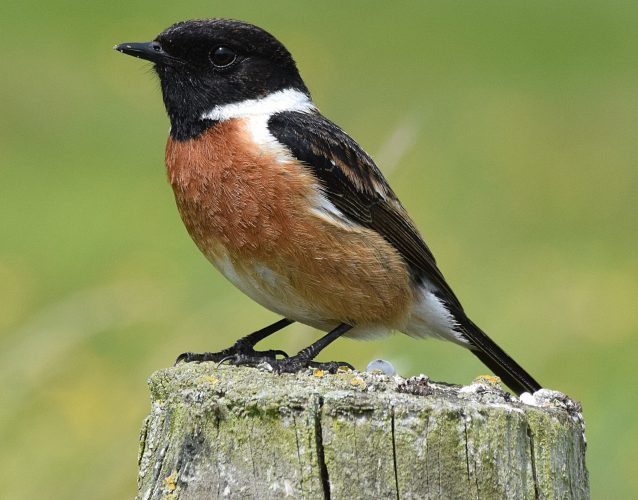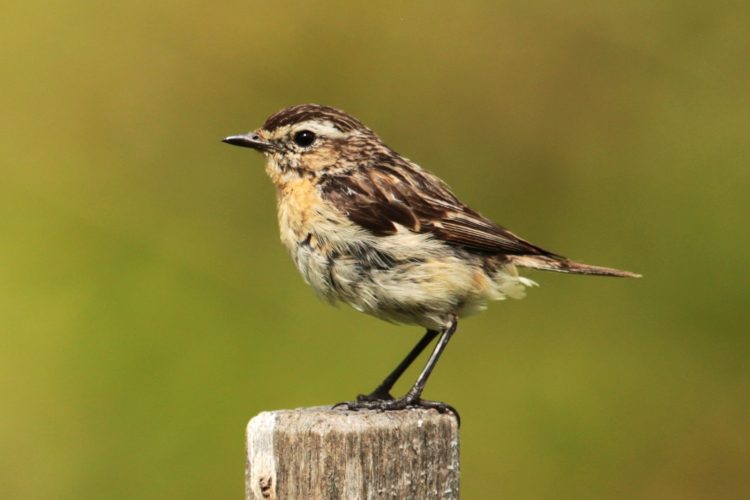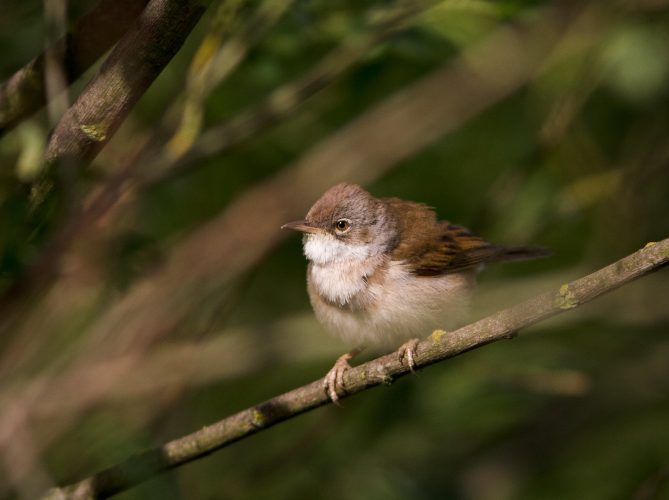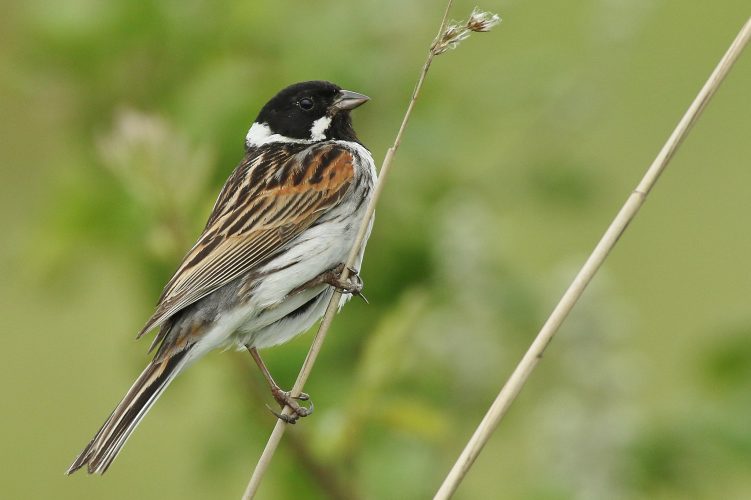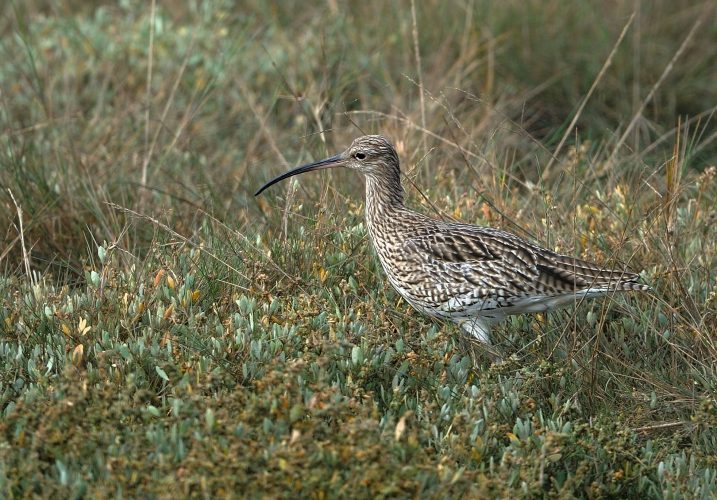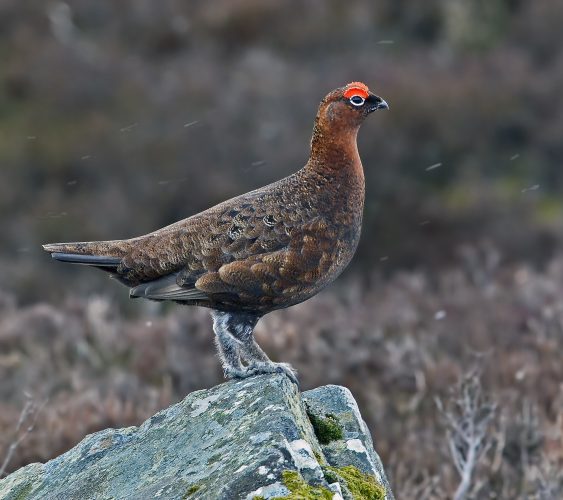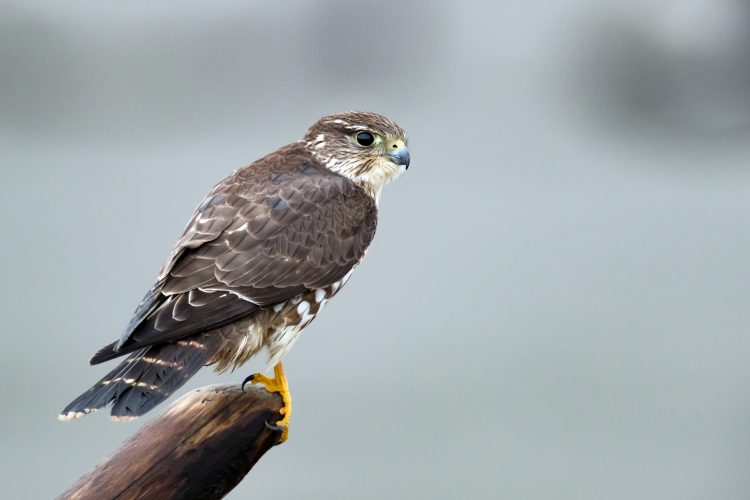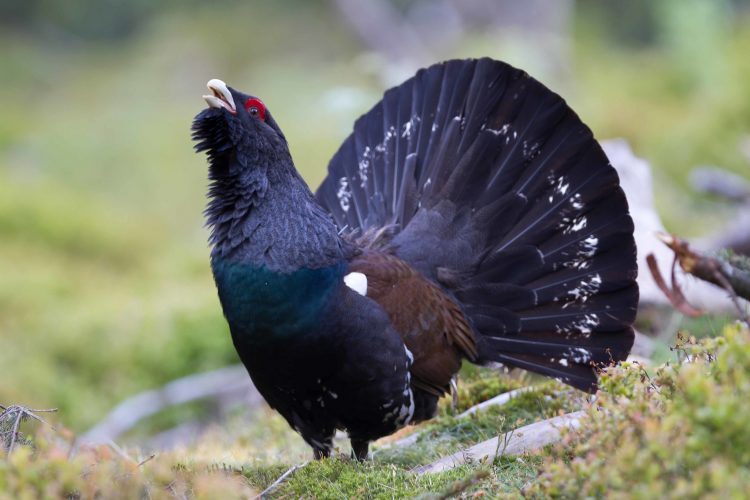1. INTRODUCTION / SUMMARY
1.1. Breeding bird surveys, all-year observations and conservation work have been undertaken since November 2017 in relation to bird populations on moorland commons in a mid-Wales study area spanning Radnorshire plus an adjacent small corner of north Breconshire.
1.2. As part of a Sustainable Management Scheme (SMS) supported by Welsh Government, 3 surveys per year were conducted during the breeding season in 2018, 2019 and 2020 on two moors managed and used by the Powys Moorland Partnership (PMP) for grazing, game-shooting and public enjoyment. In 2019 and 2020, parallel surveys were also conducted on two moors owned by the RSPB and National Trust respectively, in preparation for the ‘3 Parishes’ SMS scheme, and as controls for the grouse moor surveys. So 30 breeding bird surveys have been undertaken in all, plus – outside of the surveys – over 250 hours of upland bird observation.
1.3. The data obtained from these surveys and observations demonstrates the importance for bird species in mid-Wales of grazed upland moorland in general. It suggests that, in the absence of the large amount of this habitat, some species (Red Grouse, Merlin, Hen Harrier, Curlew, Cuckoo) would no longer be present as breeding birds in this part of mid-Wales; while others (including Snipe, Meadow Pipit, Tree Pipit, Skylark, Whinchat, Stonechat, Wheatear, Linnet, Reed Bunting) would be present in reduced numbers only. Grazed upland moorland in the British Isles is also crucial for migrating and wintering birds, not least Golden Plover. A majority of these species are BoCC Red- or Amber-listed.
1.4. The contribution made by managed grouse-moors is judged to be often positive, providing useful pointers regarding effects of skilled heather management and predator control. Comparison with the other two non-PMP sites further enables recommendations to be made regarding habitat management on moorland commons in mid-Wales, in terms of biodiversity and other public goods. In particular, the importance of various types of shrub and ffridd components is highlighted.
1.5. A Curlew conservation strategy specific to local conditions of predominantly pastoral farming has been formulated and implemented. Other habitat-management and conservation measures have been undertaken.
2. BIRD SURVEY METHODOLOGY
2.1. The objective of the surveys was to generate an evidence base of avifauna data which would (a) provide indicative measures of diversity of species and numbers of each species on the keepered moorland habitats in the PMP scheme; (b) allow comparison with future years; (c) allow comparison with differently-managed moors; (d) contribute to conservation initiatives concerning the scheme’s 5 target species (Curlew, Lapwing, Golden Plover, Red Grouse, Hen Harrier) and other species of concern in Wales (Whinchat, Linnet, Skylark, Meadow Pipit, Tree Pipit).
2.2. Survey routes were intended to provide a representative sample of the whole scheme area; while involving as little change of contour as possible, to optimize distance covered with ease.
2.3. Helped by suggestions from moor-keepers, a circular route on each of the two main ownership blocks was determined upon – 3.9 miles (6.4 kms) on Ireland moors in the east of Radnorshire, 5.6 miles (9.3 kms) on Beacon Hill in the north. These two routes are walkable at a slow pace in 3½ to 4½ hours. 3 surveys on each site were undertaken at least 4 weeks apart in the early hours of the day between May 1st and June 27th in 2018 (the late start being due to late cold spring weather). Notes of every bird encounter were made, using aural as well as visual recognition, with binoculars carried to optimize the latter. In as many cases as possible, judgements were made on territories from simultaneous singing and observed behaviour. This was therefore a ‘constant search’ methodology, but adapted to our requirements. Reference was made to ‘Bird Monitoring methods’ (Gilbert 1998), the National Trust bird survey 2016-7, the BTO Wensleydale report (2017) and others.
2.4. In 2019 these surveys were repeated on the same two sites, and also on two similar moorland sites with different management regimes, one owned by the National Trust 2.7 miles (4.4 kms), one by the RSPB of 2.4 miles (4.3 kms). 3 surveys on each of the 4 sites were conducted between April 20th and July 14th.
2.5. In 2020 the same surveys as in 2019 were conducted between April 23rd and 7th July.
2.6. Slight variations from the survey lengths shown above were made for reasons discussed in 2.10 below, and shown in all data recordings.
2.6. The survey data from the 30 surveys has been organised on Excel to show the date and location of all observations and suspected repeat observations of the same bird, with a third numerical column showing the subtracted product (observations of different birds). Standard codes were used for breeding and territorial activity, and for species (see Appendix 1). A ‘Comments’ column was added to assist in interpretation of such activity, highlight anything of particular interest, and recollecting the observation.
2.7. All data was also recorded on a map for each survey. This assisted with eliminating possible double-counts of the same bird and particularly the same territory.
2.8. Data was also recorded in ‘individual survey’ tables, regarding distance walked and time spent on survey, weather conditions, and other comments drawing attention to particular information of note for that particular survey. All times given in breeding bird surveys are BST.
2.9. For a summarised lay-out of all survey data, see pivot table in Appendix 2.
2.10. In addition to the surveys, over 250 hours of observations were made of Curlew, Lapwing, Hen Harrier, Golden Plover, Whinchat, Stonechat and other birds throughout the year on all 4 sites, and other information – gathered personally, or from other people including moorkeepers and neighbouring farmers – compiled. The surveyor has known Beacon Hill well for over fifty years, having previously lived and farmed nearby, and now resides next to the two control sites. Observations and information have been integrated with survey results to produce a broader species-by-species commentary in Table 1.
2.11. Discussion. It was considered important that the surveys should be repeatable and had a basis in ‘constant search’ technique. Nonetheless, statistical analysis should be approached with proper understanding of the nature of such a study, for various reasons.
2.12. General reasons include (i) variability of season and weather, even though all surveys were undertaken in fairly still conditions without anything more than light rain showers; (ii) pure chance. These factors alone explain why 2 surveys conducted on consecutive days on the same site would not produce identical results.
2.13. Also the four survey walks were not identical in length.
2.14. Furthermore it seemed perverse for the surveyor not to be on the look-out for species seen in a certain location previously, even though this was likely to produce a year-on-year increase in observations. Far from seeking to avoid this, an effort was made to gain a better grasp of territory numbers with certain interesting species, notably Whinchat, Stonechat and Skylark, and later surveys tended to take slightly longer. Among other things, this is providing useful information with regard to measuring the effect of bracken control measures to be undertaken on the ‘3 Parishes’ SMS. With this purpose in mind, the survey route was slightly adapted and extended on the Beacon Hill survey from the third survey in 2019 onwards to take in an area with a high Whinchat density.
2.15. The route of the Carn Gafallt survey was also changed slightly after the last 2019 survey due to the difficulty in using the steep approach to the hill originally selected, especially late in the year when vegetation is at its rankest and dewiest. The change took in a broader sample of habitat, including an area known to have a high density of Stonechat territories.
2.16. The route of the Allt Goch survey was changed and extended slightly on the very last 2020 survey in order (with a view to future work on the ‘3 Parishes’ scheme) to bring this survey length more in line with the other three, and to take in areas with known Snipe and Stonechat territories.
2.17. Analysis of parameters of the individual surveys reveals that the two longer survey routes were walked faster than the two control routes. It is assumed this is a result of the more challenging walking conditions of the control survey routes, possibly combined with an unconscious reaction to the lesser urgency to complete the shorter routes.
2.18. Conversely, the advantage of accumulating data from several long surveys over a period of several years is that minor discrepancies of perception and circumstantiality will be diminished relative to larger certainties created by repeated overlay.
2.19. So, given the broadest objectives of SMS schemes, it may be supposed that the surveys are a series of snapshots (or, rather, camcorder tapes!) of birds on the uplands of mid-Wales intended to provide as much evidence as possible that may be used for conservation purposes.
2.20. What the survey data best lends itself to, therefore, is (i) offering a general assessment of the state of birds in this mid-Wales upland study area, and (ii) allowing comparisons – which may be used for conservation recommendations and policy – regarding difference of habitat by consideration of the overall picture presented by each site, or parts of a site.
3. STATE OF BIRDS IN AN UPLAND STUDY AREA
3.1. In the 30 surveys, 4,431 separate bird observations were recorded, with 58 species considered to be using our mid-Wales moorlands as a resource during their breeding cycle, of which 14 BOCC Red-listed, 14 Amber-listed. 3 other species were observed outside surveys as likely breeders, of which 1 Red-listed, 1 Amber-listed. 5 other species were observed that use the moors as a significant resource during their life-cycle outside the breeding season, of which 3 Red-listed. So 66 species using the moor as a significant resource in their life-cycle, of these 18 Red-listed, 15 Amber-listed.
3.2. 15 other bird species were recorded in surveys or otherwise observed, though not thought to use the moor as a significant resource during part of their life-cycle, making 81 species in all.
3.3. Table 1 ranks species surveyed in order of numerousness. (Unless otherwise stated, all figures used are from column H of my data, which is the ‘product’ of all observations minus any judged repeats. The process of assessing whether each bird observation is of a bird not already observed cannot be called clear-cut, but this figure is considered the best possible measurement.)
3.4. Meadow Pipit and Skylark are by far the most numerous breeding birds on the uplands in our study area, accounting as they do between them for 2,504 (56.5%) of all survey observations of different birds. Unless there is a reason why Meadow Pipits are seen oftener than Skylarks (not impossible, note survey in mist 29/5/18), Meadow Pipits are more numerous (1615 = 36.4%) than Skylarks (889 = 20.1%). This is reinforced by the even higher proportion of Meadow Pipits later in the breeding season when juveniles are present as well. See Table 2.
3.5. From then on the list drops sharply to Stonechat (166), followed by Whinchat (160), Willow Warbler (147), Crow (131), Blackbird (113), Woodpigeon (109), Linnet (109), Wren (88), Chaffinch (72), Mistle Thrush (51), Wheatear (51), Raven (51), Song Thrush (48), Curlew (42), Mallard (42), Cuckoo (21), Red Grouse (38), Red Kite (37), Swallow (36), Reed Bunting (33).
3.6. Only 2 species occurred on all 30 surveys: Meadow Pipit, Skylark; Crows were observed on all but one survey.
3.7. At and off the bottom end of the scale, it is disappointing to have had so few observations of Yellowhammer, and none of Ring Ouzel.
3.8. 48 species were recorded during surveys on Beacon Hill, of which 45 considered to be using the moor as a significant resource during breeding; plus 2 thought to be using the moor as a significant resource during breeding though not recorded in surveys; plus 4 using the moor as a significant resource outside the breeding season; 51 significant users. Llanbedr moor 44; 41; 2; 4; 47. Carn Gafallt 40; 37; 1; 3; 41. Allt Goch 37; 34; 2; 3; 39.
3.9. Discussion. The data collected in this study demonstrates the high importance of upland moorland habitat for bird conservation in our study area of Radnorshire and north Breconshire.
3.10. A striking example is Cuckoo. This BoCC Red-listed species has declined rapidly in Britain including mid-Wales during the last 30 years, reaching the present point where the three areas of moorland represented by the surveys – Beacon Hill, Gladestry-Llandeilo Graban (Llanbedr survey), Cwm valley (Allt Goch and Carn Gafallt surveys) – are the main sites within the whole study area (Radnorshire and an adjacent corner of north Brecknock) in which I am aware of several males calling regularly in the years 2018, 2019, 2020. It is likely that moorland adjoining wooded farmland with good populations of their main host (Meadow Pipit), good food supply (large moth caterpillars favoured) and some perches from which female Cuckoos can observe nests are key factors. It has also been observed that Cuckoos in the study area are able to take the opportunity of parasitising other species (certainly Tree Pipit, possibly wagtails and Willow Warbler) than their main host.
3.11. Curlew, which have declined dramatically in the same period (BoCC Red-listed), have also become increasingly dependent upon moorland for breeding sites in mid-Wales, while often feeding elsewhere, especially at night. The most important cluster of Curlew within our study area is to be found on and around the Gladestry-to-Llandeilo Graban chain of moors, extending south to the Begwns and other hills, therefore closely associated with PMP moorland. (See further discussion for this species in Section 6 ‘Conservation’ below.)
3.12. Similarly, the only significant densities of breeding Red Grouse in the study area are on the Beacon Hill and Gladestry-to-Llandeilo Graban chain of moors, almost all of these engaged in the PMP scheme. Unfragmented tracts of heather moorland managed by skilled moorkeepers is the key factor for this BoCC Amber-listed species (also one of Britain’s few indigenous sub-species).
3.13. Merlin and Hen Harrier are further essentially heather moorland breeding species. Merlin has been observed to be present on both PMP moors during the breeding season; Hen Harrier on one of the grouse moors and one of the control survey moors.
3.14. Further species which within the study area breed not exclusively but in their most significant numbers on upland moor are Meadow Pipit, Skylark, Whinchat, Wheatear, Raven, Linnet. Species which in mid Wales have an important proportion of their breeding population on or using such habitat include Snipe, Hobby, Tree Pipit, Stonechat and Reed Bunting.
3.15. Other ‘species of concern’ shown in our surveys and observations to be breeding on moorland in the study area are: Lapwing (see ‘Conservation’ notes), Grey Wagtail, Song Thrush, Mistle Thrush, Lesser Redpoll and Yellowhammer (Red-listed); and Teal, Mallard, Kestrel, Dunnock, Redstart, Willow Warbler, Bullfinch (Amber-listed).
3.16. The importance of upland moorland outside the breeding season – too often overlooked – is underlined by our observations, in particular with regard to Golden Plover. During the study period, this species has been regularly observed in flocks of up to 250 throughout the winter months, though particularly during autumn and spring passage. Pete Jennings, county bird recorder for Radnorshire, has commented that the Painscastle area is a favoured stop-off [pers.comm]. The key here is often areas that have recently been mown for bracken-baling, creating close-cropped areas on gentle slopes favoured by this tundra plover.
3.17. Other ‘species of concern’ recorded as using moorland in the study area as migrating stop-off and wintering areas – which are of course equally essential parts of their life-cycle, winter-survival being for many species their most significant population limitation factor – are Woodcock, Fieldfare, Redwing, Starling (all Red-listed).
3.18. All but five (Golden Plover, Hobby, Wheatear, Stonechat, Raven) of the species referred to in this discussion section are on the BoCC Red or Amber list; and none of these five are numerous species; the most numerous (Wheatear) having declined in Radnorshire in recent years. Indeed it is for some conservation purposes more useful to distinguish species which are thriving better or worse in mid-Wales specifically, rather than the UK generally. 3.19. It is worth noting that the latest Birds of Conservation Concern review (BoCC4, December 2015) highlights the uplands as the habitat where the most marked decline has occurred since the previous BoCC assessment in 2009.
4. BIRD TERRITORIES
4.1. Particular effort was made, as the study progressed, to identify the territories of Whinchat, Saxicola rubetra (BoCC Red-listed) and Stonechat, Saxicola torquata, with a pattern often detectable of ‘met by male’, ‘pair seen, sometimes with fledglings later in year’, ‘seen off by male’. The fact that this interest was developed during the course of the surveys means that not too much weight should be put on difference between early and later counts. As explained in 2.9 above, this is especially the case with the Beacon Hill survey, when I detoured slightly from 6th July 2019 onward to include an area known to have several Whinchat territories. See Table 3.
4.2. Consideration of the Excel survey data was supplemented with further study of the territories of Stonechats and Whinchats on the Carn Gafallt reserve undertaken during lockdown in the spring of 2020.
4.3. I have also focused on distinguishing singing male Skylarks (BoCC Red-listed). In this case, only different singing males have been assessed, as determining connection between males and females would be less reliable than with Saxicola species. Much use was made of the tendency of one Skylark singing territorialy to provoke others. Whereas particular attention was paid to behaviour in the case of Saxicola species, in the case of singing male Skylarks mapping was of importance in seeking to avoid double-counting. All territories were counted, including those where males were singing over adjacent fields, the chances being high that nests were on the moor in the great majority of cases. See Table 3.
4.4. The data was also analysed for Willow Warblers (BoCC Amber-listed), the next most numerous on our surveys, and – like Whinchat and Skylark – a species increasingly dependent on the uplands for survival in Britain. These were usually the easiest territories to distinguish, and as such provide consistent data right from the start of the study. All territories were counted, including those where males were heard singing in woodland or farm hedges adjacent to the moor, the chances being high that the feeding territories included the moor in most cases. See Table 3.
4.5. The data could undoubtedly be analysed for other species such as Snipe, Reed Bunting, Wheatear… but time hasn’t allowed yet!
4.6. Discussion. The data from the breeding bird surveys lends itself to analysis for numbers of territories encountered, particularly in the case of passerine species with relatively small, well-defined territories advertised by singing males. This is one of the less circumstantial, more consistent results of ‘walking search’ surveys. Species knowledge and prior intention on the part of the surveyor increases accuracy, with results then cross-checked on maps made for each survey.
4.7. The data could be applied to digital maps showing hectads in which a species is believed to have bred. Though this would be a useful record in itself, using the data to estimate actual numbers of breeding territories is another matter. Wide-ranging species such as raptors (birds of prey), corvids (Crow family), Curlew cannot be assessed in the same way as birds where defended territories and feeding ranges correspond more closely, as with the majority of small passerines (perching birds). Even a passerine species such as Linnet, being wide-ranging and often semi-colonial, also poses problems (which is unfortunate, given its widespread decline). It is also no feasible, within the time constraints of a general survey, to distinguish between territories of Meadow Pipits, by reason of their sheer numbers and lesser tendency of males to advertise territories.
4.8. The data on the two Saxicola species indicates good populations on all 4 upland sites. The Stonechat data suggests a build-up of numbers since the ‘Beast from the East’ spring of 2018, as might be expected. Llanbedr and Carn Gafallt show slightly stronger populations of Stonechat, Beacon and Allt Goch slightly stronger of Whinchat. It is hoped that the study of these two Saxicola species can be extended into future years on the ‘3 Parishes’ SMS, and other schemes. One useful application of the data will be to show if bracken control measures on the Allt Goch site have a significant effect on Whinchat in particular.
4.9. For comments on Skylark numbers and territories, see 5.9 and 5.10 below.
4.10. Willow Warbler (Phylloscopus trochilus). This single-brooded member of the warbler family demonstrated consistent re-use of the same territory, wherever the habitat remained available from year to year. Given that the species is relatively long-lived for a passerine, site fidelity by individuals is a likely factor. The greater number of territories on Beacon and Carn Gafallt reflects the greater quantity of suitable taller ffridd on these two survey sites.
5. HABITAT
5.1. A series of ecological extensions resulting from management practice has been envisaged around a central general concept of ‘grazed mixed heath’, with the following relationships between birds and habitat observed on our study sites:
5.2. Heavily-grazed Heath Rush / Mat Grass habitat. This habitat is typical of huge swathes of Welsh upland, and represented in our surveys by the first half of the Allt Goch survey on Abergwesyn Common (part of the ‘3 Parishes’ SMS area, and a control survey for the PMP project). It is lower in bird species diversity than the other upland moorland habitats in the study. Nonetheless it holds important breeding populations of Skylark and Meadow Pipit (both BoCC Re-listed), plus (given stone walls, rock outcrops, or burrows for nesting sites) Wheatear. Kites, Buzzards, Crows and Ravens fly over or up from this habitat, presumably largely in search of carrion (dead sheep). Apart from these, there are virtually no other species recorded, except a few birds (Mistle Thrush are a good example) flying from nesting sites in any nearby woods to feed. Cuckoos are heard but not seen watching nests. Presumably the lack of perches is an inhibiting factor for them in this habitat, probably making it unusable for their breeding purposes unless better Cuckoo habitat exists nearby. Golden Plover may use this habitat on other parts of Abergwesyn Common, both for breeding (in vanishing numbers, as I understand) and wintering/passage, though I personally have not seen a passage flock in or near the Allt Goch area for many years.
5.3. Species-rich acid grassland. This habitat may at some times of year be close to the previous in structure, but occurring where grazing management has been more balanced. It is more diverse botanically than the previous habitat, and bird-wise too, especially where it is in mosaic with dwarf-shrub habitats (see below). One management practice which associates with this habitat is regular mowing of bracken for bedding. Since such mowing is on flats or gentle slopes, it produces a habitat favoured by passage Golden Plover. There is such an area visited every year by large numbers of Golden Plover close to the Llanbedr survey area. Curlew often feed on this habitat.
5.4. Wetlands. Few extensive areas of peaty wetland occur in the survey areas, but breeding Snipe are restricted to what there are. Snipe breed in or next to wet flushes (though in lower numbers on our survey areas than observed on other sites where cattle are present). This habitat also attracts feeding Curlew, Swallows and Hobby. Other species – such as Reed Bunting and often (but not invariably) Stonechat and Whinchat – may be more numerous where there is adjacent wet ground. Grey Wagtail may be observed by upland pools as well as in stream dingles. Grouse require drinking places on our predominantly dry upland heaths and fly from their normal living areas to drink, as do many species of passerine. It is unusual, for example, not to put up above average Meadow Pipit numbers when visiting a pond, pool or wetland on the moors, suggesting they too may travel off their home ranges to drink.
5.5. Dominant Heather, which is crossed in parts of the survey routes on Beacon Hill, Llanbedr and Carn Gafallt, also has a limited (albeit again important) fauna, with Red Grouse the most important benefitter, but Merlin and Hen Harrier also closely associated. Where heather has been recently burned or cut, serving as feeding areas for Grouse, and is low, Skylarks and Meadow Pipits breed in it. Where it is taller in the management rotation, serving as cover for Grouse, these open-country species continue to be present (aided by the invariable presence of lower heather nearby, as required for Grouse management), and a greater range of bird species are found, especially if there is the odd shrub sticking up above the heather. Separate surveys conducted by Andrew King on Bal Bach moor give good data on a site where heather is predominant.
5.6. Mixed Heath. I am using this term to describe one of the most abundant habitats on the survey sites: a variable mix of heather, grass, bracken, rushes, heather with maybe the odd isolated shrub or sapling. This habitat may result from heather having been reduced, but without poor grazing management having produced the extreme of Heath Rush / Mat Grass (see above). Bilberry is often common in the shrub layer. It allows a wide range of bird species, but is most characterized by Whinchat, Stonechat, Reed Bunting, Meadow Pipit, Skylark. It provides ideal nesting habitat for Curlew, especially in proximity to farmed fields and wetland areas. If bracken forms a high proportion of the vegetation, the habitat changes dramatically during the breeding bird season, becoming most favoured by Whinchat.
5.7. Dominant Bracken. This results on steep hillsides where only sheep have been grazed and any form of mechanical cutting is impossible. It may provide breeding habitat for first broods of Whinchat and Wren before becoming too dense for even these later in the year. There are few such areas actually within the survey routes, but it is all too common elsewhere where grazing management has been poor, as the companion habitat to the heavily-grazed Heath Rush / Mat Grass habitat already considered.
5.8. Ffridd. This habitat can be envisaged in habitat-management terms as an extension of mixed heath, but dominated by denser and taller vegetation including Gorse, Bramble and saplings of species such as Rowan, Goat Willow, Hawthorn, Birch, Sessile Oak. Such habitat – mirroring a pre-human British habitat kept from developing into woodland by large herbivores – has a rich bird fauna including Whinchat, Stonechat, Whitethroat, Tree Pipit, Reed Bunting, Yellowhammer, Lesser Redpoll, Willow Warbler, Linnet, Dunnock, Wren, Blackbird, Song Thrush, Mistle Thrush. Both male and female Cuckoo are often seen in or near trees and bushes, suggesting they may be parasitizing species other than Meadow Pipit. There is a variation in bird species according to area, density and height of vegetation, slope, aspect etcetera, so that variety in these factors is also beneficial to bird species diversity. See further comments in ‘Discussion’ below, and in Section 6 ‘Conservation’.
5.9. An interesting example of a clear-cut division of habitat is provided by the Allt Goch control survey, the first half being heavily-grazed upland plateau with rocky outcrops and wetland pans, and the second half a steep slope (Clawdd Ddu) dominated by brackeny ffridd cut through by several stream gullies. Dividing the survey figures accordingly, and taking a closer look at Meadow Pipit and Skylark data (see Table 2), we see how Skylarks go from somewhat higher (39%) than general averages on the first half (largely because of the absence of other species), to dramatically lower (5%) on the second.
5.10. It is worth noting that Skylark numbers on Carn Gafallt (average 8%) are more similar to the second half of Allt Goch than any other averages. Since Carn Gafallt is (unlike the Allt Goch second half) on level ground, this suggests that the denser, taller vegetation cover and structure which characterizes Carn Gafallt is as much a limiting factor on Skylarks as steep slope. Donald (2004) – though his data comes mostly from lowland sites – indicates the importance of vegetation structure for Skylark.
5.11. By contrast, Meadow Pipit numbers stay broadly in line with general averages on all habitats except dense bracken and dense ffridd.
5.12. Discussion. Habitat clearly plays a crucial role in the distribution of bird species and numbers in our uplands. Unfortunately, seeking a categorisation of upland habitats for the purpose of a valid, systematic correlation with breeding bird survey data is problematic. Upland heath is of its essence a habitat in dynamic transition, whether regularly arrested or otherwise, and so affected by management as well as intrinsic conditions, both of which present significant variables. Different vegetation types occur in a patchwork across many areas, and even the same vegetation type may present significantly different habitats both in the long and short term. A long term example is old rank heather as opposed to recently burned young heather: the former may offer a nesting site for Hen Harrier but not Grouse, the latter vive-versa. A short term example is the same area evolving between April and July – at a variable time and rate determined by that year’s weather! – from being nearly bare to covered with impassable bracken.
5.13. Structure is clearly as important a factor as vegetation type for breeding birds. Extent of habitat is a further factor for some species. While topography (slope, aspect, altitude, shelter) are also likely to have an influence.
5.14. It is because I have not convinced myself that a valid comprehensive analysis of the Excel data by vegetation type can be made that I have limited myself to the above categorisation, in the belief that the attempt to perceive gains and losses of bird numbers and species in relation to habitat management practices may provide the most immediate and useable approach.
5.15. Undoubtedly, poor grazing management in recent decades has caused mid-Welsh upland commons to deteriorate in every respect: reduced grazing as a result of bracken encroachment, reduced biodiversity with remaining open grassland becoming overgrazed by sheep only, reduced recreational value, reduced water and carbon retention. The causes of this deterioration are complex, and include reduction of cheap labour on farms to carry out proper habitat management. But subsidy policy has not so far sought to address such changes, and underpin and support good habitat management to produce benefits in grazing, biodiversity, recreational value, water and carbon retention.
5.16. In this situation, seen purely from a habitat management viewpoint, the extensive moors in the PMP scheme, where heather is actively managed by professional gamekeepers as well as graziers, provide examples of upland common management which ticks the boxes of these desirables. (See also consideration of conflict resolution between habitat desirables in ‘Conservation’ below.)
5.17. This is not to say these are the only examples of good practice and co-action by graziers and owners of the common and/or sporting rights. The small Carn Gafallt moor which has been used as a control in this study, owned by the RSPB and grazed with cattle as well as sheep, also provides good pointers, particularly with regard to retaining areas with taller ffridd.
5.18. The Allt Goch survey area, part of the huge Abergwesyn Common, was chosen deliberately as containing an example of declined habitat management such as has become widespread in recent years. Nonetheless, it is worth noting that (i) there are good Skylark, Meadow Pipit and Wheatear populations here; (ii) the survey area is not representative of the whole Abergwesyn Common, the steep brackeny slope running down to some SSSI rhoses – in the second part of this control survey area – fulfilling some of the stated desirables; and (iii) the National Trust is supporting initiatives of habitat improvement, including getting cattle back, and the forthcoming ‘3 Parishes’ SMS.
5.19. Difference of distribution between the 4 survey areas for the 17 most numerous species after Meadow Pipit and Skylark is shown in Table 4. It must of course be born in mind that the figures for the control survey areas are not directly comparable (resulting from fewer and shorter surveys). It is still striking how much variability there is in the site:species pattern. Look, for example, at Linnet next to Wren; or the last 7 species from Wheatear to Red Grouse!
5.19. It might be worth mentioning that study has begun on a fifth area, where rank Molinia – another widespread result of habitat management deterioration – has been actively managed by increasing grazing by hardy cattle, again with positive results against all the stated desirables.
6. CONSERVATION
6.1. The PMP scheme gave itself 5 target species:
6.2. Curlew. The recent decline of Curlew has been called the most important bird conservation priority in the UK (British Birds, Brown et al 2015), given the high proportion of the world population of the species breeding in this country. The largest population of Curlew within our study area (Radnorshire, essentially) is closely associated with PMP moors in the Gladestry-to-Llandeilo Graban upland chain of moors, and particular effort has been put into designing conservation policy suited to local circumstances here. Predation and disturbance are just as, if not more, significant factors in this area as loss of nests to silage mowing. Natural selection operating at a ‘whole population’ level has been considered significant, suggesting that addressing the root problems of habitat, predation and disturbance is more valid than addressing symptoms.
6.3. It has been judged that the following strategies are most likely to succeed: promoting co-operation between moorkeepers and local farmers regarding predator control; working closely with local farmers to locate and protect nesting pairs; effort to engage the local walking community (particular dog walkers) in helping with protection of nest during the breeding season; developing a ‘Curlew Hotline’ in partnership with a local spatial recording tech company (Exegesis in Talgarth) to locate curlew nesting in mowing fields.
6.4. It is too early to judge results, but I am aware of a good proportion of remaining pairs now in secluded areas with predator-control taking place, and juvenile birds have been observed in all years. There are signs that 2020 has been an active year for Curlew, possibly partly as a result of reduced disturbance during ‘Corona virus lockdown’, as well as our measures. Curlews are still present in late July, which strongly suggests the presence of juveniles. Clearly if viable young are being produced naturally, this is the most significant result.
6.4. Two more detailed case studies for Curlew conservation in this area has already been submitted, and it is intended these studies will be on-going.
6.5. As regards Lapwing, the game appears to be nearly lost in Radnorshire for this spectacular and popular species; and in my opinion will be totally, unless we see a return of spring cereals and a reversal of drainage of wet pasture supported by radical changes in farm payments. I can take anyone interested from Welsh government to show them how just one farm with these practices is enough to hold a pair or two!… But they’d better come soon! The ‘Beast from the East’ spring of 2018 dealt a final blow to the vanishing population in the Lundy fields by Ireland moor, part of the scheme, despite close cooperation by local farmers and scheme gamekeepers. The only positive news has been very recent: a July 2020 count of both chicks and flying juveniles in a small population adjacent to the Beacon hill moor, where cooperation between farmers, moorkeeper and conservationist has taken place as part of this PMP scheme.
6.6. Golden Plover are at the south-western edge of their breeding range in the UK. There is a very thin scattering of breeding pairs in mid-Wales, but none have been observed on any of our PMP moors as part of this study. However, these beautiful plover benefit hugely during winter and migration from the tundra-like habitat created by bracken-mowing by graziers on gently-sloping upland sites; to the extent that Pete Jennings, the county recorder, considers the Painscastle area to be a major stop-off. Farm-payment support for the continuation of bracken-mowing is therefore considered a significant conservation measure which would be beneficial. As with the above species, they are much enjoyed by local people when seen here in their spectacular twinkling flocks.
6.7. Hen Harrier. Conservation measures for this species depend upon the sort of cooperation between conservationists, graziers and moorkeepers which has been promoted by the PMP scheme; upon maintaining some patches of rank heather in undisturbed areas; and – as with other ground-nesters – upon predator control. As a result, one of the tangible gains within the short period of this scheme has been the return of breeding Hen Harrier to one of the grouse moors in the scheme this year. Another long-established pair was observed during the surveys, not on the grouse moors. Precise locations are not publicized, so as to avoid disturbance as much as persecution. Though the outlook in Radnorshire for this iconic, stunning and often controversial bird of prey has not been improved by approval for the recent windfarm development over the major Starling roost near Llandegley, there are grounds for reasonable optimism regarding its long-term status in mid-Wales.
6.8. Red Grouse. Input by the landowners in this scheme has seen the population of this BoCC Red-listed species (a subspecies of the Willow Ptarmigan, considered by some to be – along with Scottish Crossbill – the only British endemic species) increase in numbers in the study area during recent years. Our mid-Wales upland heaths have become drier in recent decades, probably as a result of surrounding field drainage and bore-holing. This – and the absence of an extensive network of keepers controlling foxes and crows to very low levels – means it is unlikely Grouse populations will ever rise to the numbers seen on the extensive grouse-moors further north. Nonetheless, the increasing chance these days of an occasional sight or sound of Grouse in the heather gives pleasure to local people and visitors well beyond the shooting fraternity. Conservation measures for this species are of course mainly determined upon and implemented by the moorkeepers, but one of the gains of the scheme is to have promoted constructive discussions on conservation strategies with conservation agencies beyond the Game and Wildlife Conservation Trust, including the Wildlife Trusts and RSPB.
6.9. Having made these species-focused observations, I wish to emphasize that in my experience species-by-species insights for conservation should never cause us to lose sight of the more significant role of habitat management practices, On moorland, management practices are the reality from which the conservation of different species and the other desirables (food production, water and air quality, water and carbon retention, recreation, landscaping) emanate. There will be winners and losers in different locations and at different stages of habitat-management cycles, but the overall results would be the best across the board for all these desirables. Government policy supporting good habitat management is guaranteed to make most improvement to the present situation.
6.10. The essential lesson to be taken from the PMP grouse moors is that they are maintaining in good condition large tracts of heather upland, a habitat of international significance. My only recommendations for possible further improvements on these grouse-managed moors are (i) to leave some patches of rank heather in the most inaccessible parts of the moors, and (ii) allowing or encouraging the development of more ffridd in suitable small and large areas, the latter most likely on moor edges and slopes, where they will provide winter shelter and food for grouse as well as breeding habitat for several significant species. Though taller ffridd tends to be lacking on the grouse moors, in fairness there are areas of such habitat on some edges of the PMP grouse moors, and the advantages of leaving even small areas of scrub within the managed heather is being taken on board by the grouse moor owners, keepers and graziers.
6.11. It is worth considering the implications of the fact that good habitat management such as instanced on the PMP grouse moors is almost certain to cost more than it yields from shooting in mid Wales.
6.12. The need to move to a state of ‘uplands managed for diverse habitats’ is more evident and pressing on the Abergwesyn Common, of which the Allt Goch control survey area forms part. This huge common exemplifies a typical state of many upland commons in mid-Wales resulting from former farm-support policies rewarding stock numbers rather than supporting habitat management. To move from this state to the proposed ideal in such areas will require carefully-targetted support for measures such as returning cattle to the hills.
6.13. The richest, most diverse ‘bird hotspots’ on all areas occur when there is a wide variety of habitats in patchwork, including semi-natural grassland, ericaceous shrubs at various heights, well-protected peatlands and wetlands, and areas of ffridd with taller shrubs including gorse and scattered trees such as hawthorn, rowan. All 4 survey areas demonstrate that presence or absence of shrub habitats of varied structure greatly affects bird diversity.
6.14. It is worth pointing out that the above-proposed proposed habitat management ideal represents the re-establishment of what were once called ‘wastes’, in other words habitat useable by stock for grazing and browsing, but which was also used for other purposes such as providing gorse for bread-ovens, and gathering of fruits such as whinberries. In a modern era, where such goods are little sought-after, they are replaced by other major public goods: (i) the restoration of biodiversity, it being well documented now that the decline in bird species is closely connected to the loss of this habitat midway between open farmland and woodland; (ii) landscaping, access and public enjoyment; (iii) the urgent need to retain more water on the hills; (iv) better carbon retention.
6.15. Purely from the biodiversity viewpoint, it is useful to note that ‘waste’ habitat – halfway between woodland and pasture – also corresponds to the understanding ecologists now have of the pre-human habitat of a wooded landscape regularly opened up by large herbivores. This goes a long way to explaining why peaks in species diversity were recorded in Britain when such habit existed, and still can be recorded in other parts of Europe where it exists. And why troughs in diversity (such as the last 30-40 years in the UK) take place when proper management of commons is neglected.
6.16. It is interesting, for example, to consider that the main natural habitats of Red Grouse before deforestation in Britain and Ireland are thought to have occurred on a belt of heath in between the timberline and Alpine zone, and that today studies show densities of red grouse increasing, until canopy closure, in plantations established on moorlands and in naturally regenerating woodland. (See Watson and Moss, ‘Grouse’ in ‘New Naturalist’ series, Collins, 2008, p.281.)
6.17. Such ecological understandings – combined with the data in this report demonstrating the importance of upland moorland habitat for the conservation of several species of high international concern – raises an interesting perspective on the push to establish more tree plantations in the uplands, or even ‘rewild’ such areas. In brief, greater fragmentation of Welsh heather moorland would undoubtedly reduce biodiversity on this high priority habitat in international terms (along with our sea-cliffs, and habitat for wintering geese and waders), whereas if large areas of open hill are retained, sustainable farm payments to support proper habitat management would allow these to return much greater public goods on several fronts. The argument in favour of this seems particularly strong given that these various public goods (biodiversity, water quality and retention, carbon storage, landscaping, access and public enjoyment) are not conflicting between themselves, but would all be simultaneously improved by management for diverse habitats.
6.18. The PMP project has also given all-important pointers on resolving potential conflict of interest between nature conservation and recreational access. The answer must lie in zoning, which in turn should rest upon positive ease of access and education rather than negative restriction. Being so easily accessed and closest to nearest population centres, the car-parks on the Begwyns and now constructed in the PMP scheme on Ireland moor are ideal places to promote access, and the PMP scheme has enhanced this with two different length colour-coded trails. Such ‘positive zoning’ offers the only viable method of preserving areas of greater sanctuary for wildlife such as Hen Harrier. It is worth noting that the RSPB adopts this policy in balancing the high public access which its reserves are subject to alongside sanctuary reserves, a factor in the high value of the control survey area on Carn Gafallt.
6.19. The Powys Moorland Partnership SMS has further convinced me of the crucial role of community engagement for actual significant progress to be made in addressing the big issues in nature conservation in Wales. Putting money at a local level has prompted landowners, conservation agencies, special interest groups and the general public to get together here, breaking down walls which have developed over recent decades (for example between farming and conservation), and working collectively. I make this point because it is rarely indicated as a high priority in conservation reports.
6.20. Tricky issues such as predator control can only be addressed through this process of breaking down barriers. Mary Colwell, the leading campaigner to save breeding Curlew, said at a Radnorshire Wildlife Trust annual lecture last autumn: ‘Conservationists have to choose between having gamekeepers with Curlew, and having no gamekeepers with no Curlew’. In the human-altered British countryside, medium-sized generalist predators such as foxes and crows – given increasingly fragmented habitat and the absence of large predators – are unnaturally abundant on moorland. Control of such predators can therefore be given a rational and ethical basis, which is a good place to start a cooler debate. Increased cooperation between moorkeepers and farmers regarding control of crows and foxes has been a gain from this SMS scheme.
6.21. It is worth flagging up an example of how the combination of good habitat management and predator control has benefitted significant species other than birds. Hares (Lepus europaeus) are more common on all the moors managed for grouse than on the control sites and indeed on any other site I am aware of in Radnorshire and north Breconshire. This is highly likely to be related to control of generalist predators such as Foxes.
6.22. In addition to implementing the Curlew conservation strategy described, a number of habitat measures have been implemented in line with the above recommendations, including the creation of scrapes and ponds on the moor, and on in-bye land in co-operation with local farmers. There has also been assistance given to farmers in locating nesting Curlew and Lapwing, to improve their protection during legal farming operations.
6.23. In one instance, a local spatial Recording tech company offered to come out on a trial basis with an operator and a high-tech camera carrying drone to locate a nest of fledgling Curlew. It may be noted that the company – Exegesis of Talgarth – offered to charge only a fraction of the normal cost for this conservation work. Though the trial was not carried out – the Curlew having moved on by the time the equipment was available – it is hoped that we can build on this partnership, and develop a ‘Curlew Hotline’ service in the area for next year.
6.24. Some of the conservation successes achieved during the period of the SMS raise the question of on-going input. I will try to raise funding or sponsorship in order to be able to continue working with the large number of farmers we have been in partnership with. Probably the most significant risk is that the moorkeeper’s job on Beacon Hill may not be maintained into the future.
6.25. Not surprisingly, conclusions drawn in this report on the significant gains from proper habitat management on upland commons are similar to those in other recent studies and reports such as ‘Managing Upland Resources’ (Lois Mansfield, 2018), ‘Ploughing a New Furrow’ (Malcolm Smith, 2018), ‘Green and Prosperous Land’ (Dieter Helm, 2019), ‘Breeding Bird Surveys of the Peak District Moors 1990-2018’ (Moors for the Future Partnership, 2019), ‘Final Report of Langholm Project’ (2019), ‘Birds and Uplands’ (Ian Newton, 2020).
Nick Myhill, July 2020
TABLE 1: COMMENTED LIST OF BIRD SPECIES OBSERVED DURING SMS PROJECT
[Arranged in order of number of records on breeding bird surveys. Numbers given after the species name in brackets relate to surveys; for example, ‘26:6:3’ indicates a species recorded 26 times, in 6 out of the 29 surveys, on 3 of the 4 sites. X indicates species observed only outside of surveys. Comments refer to all observations, not just survey data. ♀ = female; ♂ = male.]
1a. Bird species for which mid-Wales moorland is a significant resource during the breeding season
Meadow Pipit [MP] (1615:30:4). The most commonly observed species on the surveys, upland moorland being the most important habitat for this Amber-listed species. Though I’ve not attempted any estimate of numbers of breeding pairs on the survey sites, likely more than Skylark overall, possibly partly because MPs continue to feature in areas of steeper ground and ffridd where Skylarks drop out. Important as the main host for Cuckoos in Wales, and a major prey item for raptors. Mostly absent in winter. One interesting field observation has been that where Whinchat or Stonechat have been alarm-chatting during breeding season, almost invariably joined by calling MPs which also have young to worry about!
Skylark (889:30:4). Along with Meadow Pipit, by far the commonest breeder on all 4 moors, upland moor now being the main breeding habitat of this Red-listed species in UK. Winters elsewhere, gathering in pre-breeding flocks up here on the moors in spring before dispersing. Figures obtained from our surveys of singing males should provide repeatable baseline for on-going comparison.
(See data analysis of these 2 most numerous species, constituting between them 56% of all observation, in my final reporting)
Stonechat (166:27:4). Observations suggest widespread breeder, and probably survives as resident through mild winters in suitable locations (not 2018’s ‘Beast from East’!). Greater preference for gorse, and probably less numerous than Whinchat on these moors, but numbers fluctuate (according to severity of winters), with 2020 appearing to show significant recovery.
Whinchat (160:26:4). All moors. Observations suggest it is a common, widespread breeder on suitable habitat on upland moors, which is the main habitat in Britain of this Red-listed species. Breeds in even small clumps of scrub, including bracken. Not recorded till fairly late in May in 2018, but then probably benefitted at expense of next from hard winter. An early record of male on 20th April in 2019 on Llanbedr.
Willow Warbler (147:28:4). Commonest warbler on upland commons in mid-Wales. Breeding on moorland wherever there is a Rowan, Birch, Hawthorn etcetera, so in just about any ffridd, woodland edges and gullies. Upland commons increasingly important for this Amber-listed species.
Carrion Crow (131:29:4). Omnipresent, breeds on or near all 4 moors. Difficult to assess overall or breeding numbers, and almost certainly undercounted because no way of distinguishing different individuals in such a wide-ranging species. Largest groups observed on sites where stock fed, and later in breeding season when new families group together. Increased numbers in recent decades implicated in decline of Curlew, thought to be the cause of one destroyed Curlew nest on one of our moors in 2019. Controlled by moor keepers.
Blackbird (113+:26:4). Common breeder in gullies, woodland edges and hedges on or by both moors, regularly feeding into moorland.
Woodpigeon (109:26:4). Frequently observed, common and ubiquitous bird, in increasingly large groups by mid-summer, clearly suggesting that it breeds on or nearby all moors.
Linnet (109:22:4). Seen regularly in breeding season and no doubt breeds on 3 of the survey areas (only 1 observation on Allt Goch), though no large flocks of this semi-colonial species observed on any of them. Densest (albeit isolated) population possibly on Carn Gafallt because of greater proportion of gorsy ffridd. Undoubtedly upland commons with scrubby areas important for survival of this Red-listed species in mid-Wales, but numbers no doubt limited by availability of seeds on arable and rough-ground weeds. Wide-ranging in breeding season, so difficult to assess numbers accurately. On 30/5/18, in a flock of 8 birds (including juveniles, in field below Llanbedr Moor), a nearly all-white individual observed! Curiously, Pete Jennings (‘Birds of Radnorshire’) only record of a white individual was seen ‘amongst a flock of 200 near Llandeilo Graban on 6th November 1988’, so not far away.
Wren (88:20:4). A commoner breeder on moorland than often supposed, some movement downhill in winter. Closely associated with brackeny ffridd (as opposed to areas of mown bracken which lack old bracken litter), which accounts for fewer observations on Llanbedr surveys. Fewer observations in 2018 probably due to cold late spring, and numbers appreciably growing (like Stonechat) since then.
Chaffinch (72:23:4). Commonly observed in hedges, gullies and woodland edges of moors, certainly breeding on edge of all moors, family groups observed on moors in late summer. Not a species that relies primarily on moorland, being very common and widespread elsewhere.
Mistle Thrush (51:25:4). Red-listed. Breeds on woodland edges and in trees on or near all moors, though most common on Beacon Hill. Flies further into open moorland habitat to use as summer feeding grounds more than other of thrush family.
Wheatear (51:19:4). Of the passerines, the species that benefits most from heavily-grazed upland commons; breeds in small numbers on all 4 commons in open rocky places; possibly commoner on unsurveyed higher parts of Abergwesyn Common. Nominate race an early arrival (earliest observation during study period 8th March 2019, not in survey area). Migrant birds also observed, especially in spring; for example, small group of females observed on Abergwesyn Common (near to Allt goch survey area), 9th May 2019, almost certainly Greenland race; this observation underlining the importance of Welsh uplands as stop-off habitat for some long-distance migratory species (see also Golden Plover).
Raven (51:18:3). Easy to observe, present on all 4 moors, though not recorded during survey on Carn Gafallt. Less numerous than Carrion Crow, but group of 12 observed on 12/7/19, and 8 on Llanbedr in late June 2018. Probably breeds on or near all 4 moors, though no certain nest sites identified during survey period, just one suspected.
Song thrush (48:18:3). Red-listed. Breeds in woodland edges and wooded gullies beside moors, recorded during surveys mostly on Beacon and Carn Gafallt, least on Llanbedr, underlining the fact this species travels less far from woodland to feed than Mistle Thrush.
Curlew (42:17:2). Red-listed. Easily detected, difficult to census territories. Has attempted to breed on or near both keepered sites in all years, only a few pairs, though those at Llanbedr part of a larger potentially viable local population group in the Gladestry-to-Begwyns area that may be viable, given continued conservation input. Juveniles seen on both sites in 2018, reported chicks near Gladestry only in 2019, chicks reported on Llanbedr and evidence of juveniles on both moors in 2020. Appears to have fared best in 2020, probably due to less disturbance during Covid lockdown. See separate reports and case studies.
Mallard (42:10:2). Amber-listed. Observed and known to breed on Beacon, possibly Llanbedr. Brood of young ducklings observed 1/5/18 on Pool Hill (Beaco), occasional possible pairs. But far more males observed, sometimes in all-male groups.
Cuckoo (41:21:4). Red-listed. Observed and heard constantly till summer solstice on all moors, which – together with a few other habitat-managed moors – are the main stronghold of this species in this part of mid-Wales, where it has otherwise declined dramatically in recent years.
Red Grouse (38:12:2). Red-listed. A race of Willow Grouse only found in the British Isles, so of high conservation interest. Requires heather of various ages. Doing well on both keepered moors, no survey or other sightings on other moors, though occasional reports on wider Abergwesyn Common. Not surprising that it often went unobserved, especially on later surveys, as tends to lie low with young at this period. See also Keepers’ figures.
Red Kite (37:25:4). Breeds close to and common on all 4 moors. Like Carrion Crow, probably undercounted because no way of distinguishing individuals. 6 birds observed at same time during one survey, on non-survey observations seen in much greater numbers, over carrion, or mown fields. Difficult to estimate numbers regularly present on our moors (as with Buzzard, Carrion Crow and Raven). No data or observations on threat to species such as Curlew.
Swallow (36:18:4). Breeding in nearby farm buildings, uses moorland as significant feeding area, especially in evenings. On 2 out of 3 observations of Hobby, Swallows were apparently being hunted.
Reed Bunting (33:18:4). Amber-listed. Breeding on all 4 moors in small but significant numbers, not necessarily close to wet habitat. Moorland is an increasingly important habitat for this species.
Redstart (28:15:4). Amber-listed. Breeds in gullies and hedges in or by all four moors.
Snipe (26:19:4). Amber-listed. Calling (and sometimes displaying) males on all 4 moors, probably breeding on them in small numbers. (Only 100 breeding pairs estimated for all Radnorshire by Pete Jennings). More drumming displays recorded in 2020 than previous years.
Buzzard (26:16:4). Breeds close to and uses all 4 moors. Probably undercounted because hard to distinguish individuals on surveys (though occasionally more possible than witrh Kites). Though no more than 3 birds observed together during surveys, on other occasions seen in large gatherings, especially in fields of mown grass in summer, and anywhere in winter, when likely that numbers augmented by wintering birds. No data or observations on threat to species such as Curlew.
Tree Pipit (25:11:3): Red-listed. Very much a ‘tall ffridd’ as well as woodland edge species on moorland, thus commonest on Carn Gafallt, also Allt Goch, absent on Llanbedr, now recorded once on Beacon in 2020.
Robin (16:10:4). Breeds in gullies and woodland edges in or by both moors.
Dunnock (16:10:3). Amber-listed. Breeds in gullies, woodland edges, and particularly brackeny ffridd, so commonest on Carn Gafallt, not recorded on Llanbedr.
Stock Dove (15:10:4). Amber-listed. Observed or heard on or near all 4 moors during the breeding season, so probably breeding nearby.
Great Tit (15:5:3). Family groups occasionally recorded on moors in late summer, giving a higher number than actual frequency on moorland.
Goldfinch (14:4:3). Occasional observations on or over moorland, likely breeder nearby.
Magpie (11:8:2). Observed occasionally, mostly near or beyond edges of Llanbedr moor. One breeding pair observed regularly by Lapwing breeding site at Lundy, occasionally chased by Lapwing ♂♂.
Lesser Redpoll (11:5:2). Red-listed. Observed as probable breeder in ffridd on Carn Gafallt; and once during survey in family group on edge between Beacon moor and conifer wood, early July 2019.
Whitethroat (11:5:1). Up to 3 pairs in Carn Gafallt’s good ffridd (note conspicuousness of males singing in late survey 14th July 2019). Outside surveys, regularly heard in gorsy ffridd on lower parts of Llanbedr near Lundy in 2019, and one apparently territorial bird observed in July 2018 at Llandeilo Graban end of Llanbedr moor.
Red-leg Partridge (11:5:1). Introduced on both keepered sites, increasingly widespread and breeding on field edges of Llanbedr.
Black-headed Gull (11:4:1). Amber-listed. A few birds seen during surveys on Llanbedr moor only, presumably from Llanbwchlyn.
Rook (11:2:2). One flock observed with Jackdaws on flat grassy heathland on Beacon Hill in early June, otherwise mostly in adjacent fields only during the breeding season. Flocks with Rooks and Crows more common outside the breeding season.
Pied Wagtail (10:6:2). One sighting of family group late in summer 2019 on Beacon, occasional sightings of one or two birds otherwise, mostly Beacon.
House Martin (9:3:2): Amber-listed. Occasional feeder over moors, especially Allt Goch and Carn Gafallt, with known nearby breeding sites.
Peregrine (7:5:1). Observed with young on one moor in 2018, probably bred 2019. Widely known to have been regular breeder on the both keepered moors for many years. Also seen around the two control moors occasionally.
Swift (5:4:2). Amber-listed. Occasional sightings of one or two birds flying over, feeding.
Grey Wagtail (5:2:2). Amber-listed. One survey observation of family up stream dingle Allt Goch July 19, and apparent juvenile on Ireland pool June 2018,
Kestrel (5:4:3). Amber-listed. Can be seen regularly on all 4 moors, especially the 2 grouse moors. A significant presence on keepered moorlands, given decline of the species in mid-Wales, widely attributed to predation by Goshawks. On Llanbedr possible breeding behaviour observed I spring 2018 by tree in adjacent in-bye field, young birds observed by keeper in July.
Blackcap (5:4:2): 2 singing males in predominantly conifer wood on edge of Beacon, 3 in similar habitat on edge of Allt Goch.
Lapwing (3:2:1). Red-listed. A vanishing breeder and occasional migrant. Flock of over 20 seen on edges of Llanbedr moor before ‘Beasts from East’ in early 2018, but far fewer afterwards: one pair bred here that year, with 9 birds seen regularly. A few birds seen in same location early 2019, but none stayed to breed, possibly moving to a nearby farm with suitable habitat. Bred on and near Beacon till very recently, but no record in survey years till 2020, when 4 birds observed in nearby field in May, then at least 9 including both flying juveniles and chicks (thus 2 hatches) on 1st July. This is one of very few sites in Radnorshire, and collaboration with local farmer and gamekeeper has been good.
Jackdaw (3:1:1): One flock observed with Rooks on flat grassy heathland on Beacon Hill in early June, otherwise mostly in adjacent fields only during the breeding season. Flocks with Rooks and Crows more common outside the breeding season.
Greenfinch (2:2:1). An unexpected observation at 475m ASL in conifer wood by Beacon Lodge in both 2018 and 2019, almost certainly breeding (seen on second occasion when not surveying). The County Bird Recorder, Pete Jennings, had observed this species in this exact location too!
Hen Harrier (2:2:2): [Data sensitive] Red-listed. Single bird observed 8/10/18, ringtail, large, so probably female; ringtail observed 10/5/19, also ringtail; on same moor (one of the grouse moors). Male recorded during survey on one of grouse moors in 2020, with nesting observed outside survey on the other grouse moor, with crucial support from the gamekeeper. Male observed during survey on one of control (non-grouse) moors, 1/5/19, and on other occasions, this being in an area where the species has nested regularly. Though still not common, our mid-Wales moorlands are a significant refuge for this high-priority species.
Blue Tit (2:2:1). Recorded in hedges beside Llanbedr and Carn Gafallt, one bird recorded on a survey in mid-moor in May, uses moorland more regularly in autumn.
Yellowhammer (2:1:1). Only one fleeting observation during survey (Beacon), but observed occasionally on nearby farmland and in lower edges of moorland with scrubby ffridd, especially around Llanbedr. Said to have bred in reasonable numbers on bracken areas of Abergwesyn common nearby, above Llanwrthwl and Llysdinam, but apparently declined recently here too, and not observed by Allt Goch or Carn Gafallt recently. This Red-listed species could no doubt become more numerous again if ffridd habitat complemented by more mixed farming (ie arable crops in our pastoral area).
Bullfinch (2:1:1). Amber-listed. Very occasional observations in lower edges of moorland.
Sparrowhawk (1:1:1). Heard on one survey, and seen frequently enough outside surveys to suggest that it breeds near all 4 moorland areas.
Hobby (2:1:1). Three sightings on Beacon in 2018: probably ♀ 18/5, probably ♂ 25/6 and 4/7 (likely to be same bird). Two sightings on Beacon in 2020. Likely to be breeding nearby. The availability of Meadow Pipits and Skylarks over open moor, and Swallows and dragonflies over upland pools, makes this species regularly visible on our moorlands, though by no means confined to uplands. Summer visitor only.
Teal (1:1:1): Amber-listed. Only seen once on survey on Llanbedr, male and female together, but no sign of breeding on this occasion. Possible breeding in nearby farm wetland.
Jay (1:1:1). Only one observed on survey, very occasional in or near oakwoods on moor edges.
Chiffchaff (1:1:1). Only recorded in conifer woods on edge of one moor, probably breeding there.
Merlin (1:1:1). Red-listed. Heather moorland is key to the survival of Merlin as a breeding species in Wales. Likely breeder on or near the two grouse moors, though only observed once during a survey. Seen once on each keepered moor in 2018, including flying over breeding Lapwing breeding area (no apparent threat to this large bird, unsurprisingly); both sightings of ♂♂. Seen twice on Beacon in 2020. Not considered a threat to Grouse management. After the departure of Meadow Pipits and other small birds from the uplands in autumn, the Merlin less commonly seen on our uplands during winter.
Barn Owl (1:1:1). One report from moorkeeper on north side of Llanbedr moor, November 2019, plus now recently recorded during breeding survey on 25/5/20.
Long-eared Owl (X): Thought to be present in woodland near Beacon moor.
Tawny Owl (X). Amber-listed. Occasionally heard, and one report of possible breeding on edge of Llanbedr moor.
Starling (X): Red-listed. Though not observed within a survey, observed as a likely but rare breeder close to both grouse moors. In winter large flocks of Starlings, which must be mostly immigrant birds, have been observed on the PMP commons.
1b. Bird species for which mid-Wales moorland is a significant resource outside of breeding season
Golden Plover (X). No report of breeding on surveyed commons, though possibly nearby. British moorlands are however crucial in the survival of this species on passage, an easily overlooked conservation priority. Observed from October up till April, mostly in migration. Mown bracken area on Herdman’s Gorse (Llanbedr) a favourite ‘stop-over’ site: flocks of up to 185 observed here. An estimated flock of 250 observed on nearby hillside April 2019 included birds in breeding plumage. The wider Painscastle area known to be an important ‘stop-over’ for the species.
Jack Snipe (X). Occasional reports from moorkeepers.
Woodcock (X). Red-listed. Birds regularly ‘raised’ from cover on grouse moors from October till March, likely to be wintering birds from abroad.
Fieldfare (X). Red-listed. Wintering, observed mostly in small flocks.
Redwing (X) Red-listed. Wintering, observed mostly in small flocks.
1c. Other species recorded on and outside surveys, but not considered to be using moor as significant resource
Pheasant (11:9:4). Often heard from all moors, in nearby farmland, but not observed on moorland during breeding bird surveys, only once outside surveys.
Great-spotted Woodpecker (8:5:3). Observed on one survey in family group in sessile oak tree overhanging moor edge Carn Gafall. Apart from this, regularly heard drumming in trees and nearby woodland from all sites, but unlikely to use actual moorland habitat much.
Canada Goose (7:4:3). Occasionally flying over, or heard (eg towards Llanbwchlyn Lake, where it presumably breeds). On one survey a possibly prospecting pair disturbed from Ireland Pool.
Cormorant (1:1:1): Seen flying over in one survey, near Elan reservoirs.
Nuthatch (1:1:1). One observed in trees overhanging Carn Gafallt common.
Lesser black-backed Gull (1:1:1): Occasionally observed flying over, at any time of year, once seen on survey.
Green Woodpecker (1:1:1). Occasionally heard in distance when surveying, never yet observed on a moor.
Heron (X). Occasionally flying over.
Grey Partridge (X): Introduced by Gladestry moors.
Goshawk (X). Seen very occasionally over Carn Gafallt and Beacon.
Little Owl (X). Only heard, once, outside of survey.
Kingfisher (X). One observation on nearby pool.
Sand martin (X). One flock of a dozen plus birds observed over-flying in early July 2018.
Pied flycatcher (X). Observed or heard – not commonly – in adjacent woods or fingers of farmland with trees and streams reaching up into moorland.
Long-tailed tit (X). One observation of small family group in farmland edge by Beacon in July.
So, in total 61 breeding birds on our mid-Wales moorlands, of which 15 BOCC Red-listed, 15 Amber-listed; 5 using the moors as a significant resource outside the breeding season, of which 3 Red-listed. Plus 15 species recorded in surveys or otherwise observed, though not thought to use the moor as a significant resource during any part of their life-cycle. 81 species in all.
TABLE 2: MEADOW PIPITS and SKYLARKS
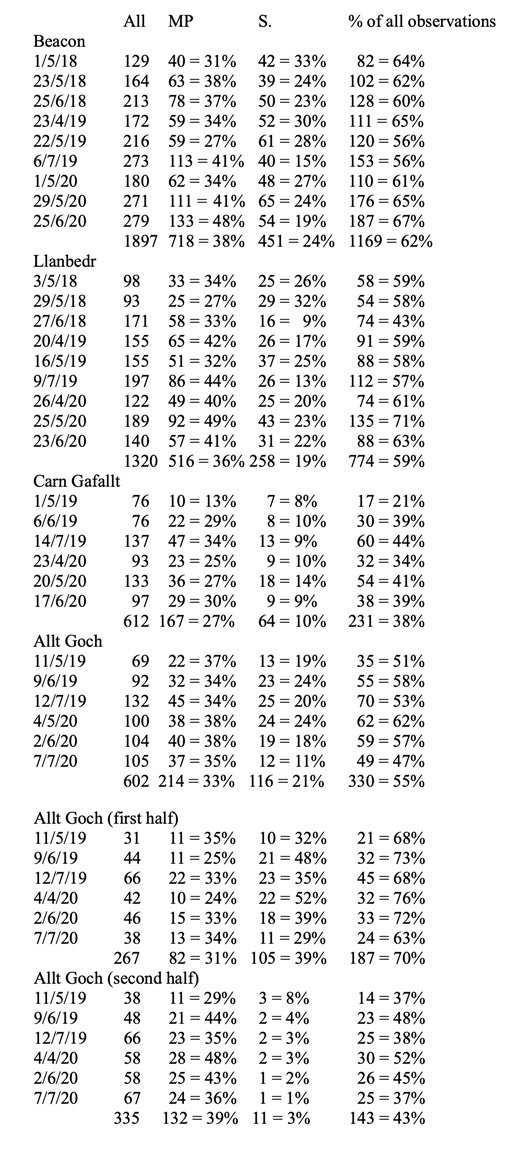
TABLE 3: SOME BREEDING TERRITORY ANALYSIS
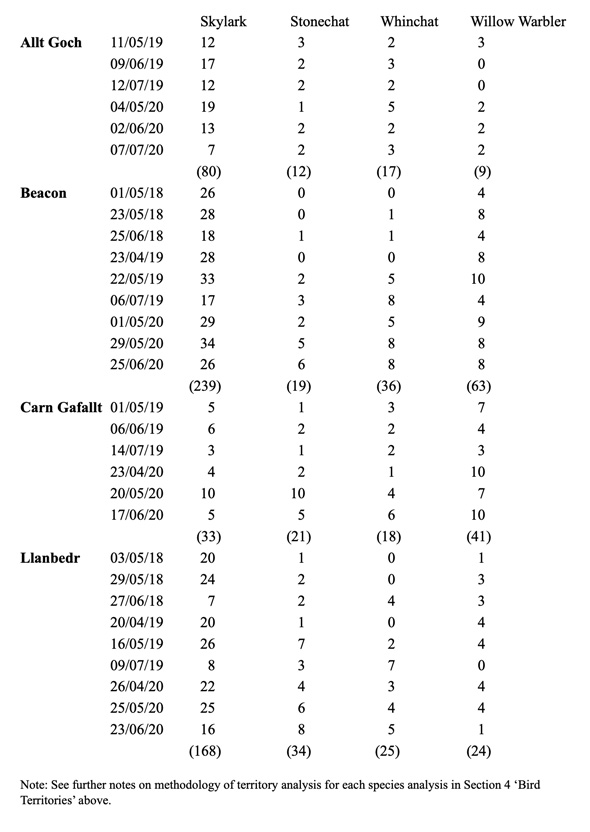
TABLE 4: DISTRIBUTION OF MORE NUMEROUS SPECIES IN RELATION TO SITE
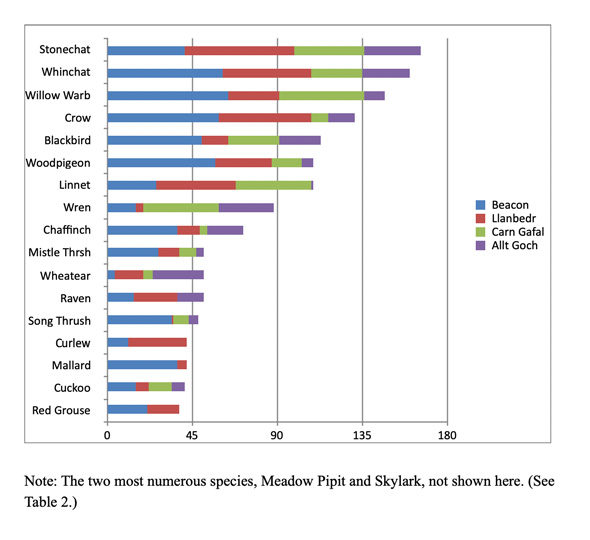
TABLE 5: ANALYSIS OF SOME SURVEY PARAMETERS

APPENDIX 1: SPECIES AND BREEDING CODES USED IN PIVOT TABLE
B. Blackbird (Turdus merula)
BC Blackcap (Sylvia atricapilla)
BF Bullfinch (Pyrrhula pyrrhula)
BH Black-headed Gull (Chroicocephalus ridibundus)
BO Barn Owl (Tyto alba)
BT Blue Tit (Cyanistes caeruleus)
BZ Buzzard (Buteo buteo)
C. Carrion crow (Corvus corone)
CA Cormorant (Phalacrocorax carbo)
CC Chiffchaff (Phylloscopus collybita)
CG Canada Goose (Branta canadensis)
CH Chaffinch (Fringilla coelebs)
CK Cuckoo (Cuculus canorus)
CU Curlew (Numenius arquata)
D. Dunnock (Prunella modularis)
G. Green Woodpecker (Picus viridis)
GF Greenfinch (Carduelis chloris)
GL Grey Wagtail (Motacilla cinerea)
GO Goldfinch (Carduelis carduelis)
GS Great Spotted Woodpecker (Dendrocopos major)
GT Great Tit (Parus major)
HH Hen Harrier (Circus cyaneus)
HM House Martin (Delichon urbica)
HY Hobby (Falco subbuteo)
J. Jay (Garrulus glandarius)
JD Jackdaw (Corvus monedula)
K. Kestrel (Falco tinnunculus)
KT Red Kite (Milvus milvus)
L. Lapwing (Vanellus vanellus)
LB Lesser Black-backed Gull (Larus fuscus)
LI Linnet (Carduelis cannabina)
LR Lesser Redpoll (Carduelis cabaret)
M. Mistle Thrush (Turdus viscivorus)
MA Mallard (Anas platyrhynchos)
MG Magpie (Pica pica)
ML Merlin (Falco columbarius)
MP Meadow Pipit (Anthus pratensis)
NH Nuthatch (Sitta europaea)
PE Peregrine (Falco peregrinus)
PH Pheasant (Phasianus colchicus)
PW Pied Wagtail (Motacilla alba)
R. Robin (Erithacus rubecula)
RB Reed Bunting (Emberiza schoeniclus)
RG Red Grouse (Lagopus lagopus)
RL Red-legged Partridge (Alectoris rufa)
RN Raven (Corvus corax)
RO Rook (Corvus frugilegus)
RT Redstart (Phoenicurus phoenicurus)
S. Skylark (Alauda arvensis)
SC Stonechat (Saxicola torquata)
SD Stock Dove (Columba oenas)
SH Sparrowhawk (Accipter nisus)
SI Swift (Apus apus)
SL Swallow (Hirundo rustica)
SN Snipe (Gallinago gallinago)
ST Song Thrush (Turdus philomelos)
T. Teal (Anas crecca)
TP Tree Pipit (Anthus trivialis)
W. Wheatear (Oenanthe oenanthe)
WC Whinchat (Saxicola rubetra)
WH Whitethroat (Sylvia communis)
WP Woodpigeon (Columba palumbus)
WR Wren (Troglodytes troglodytes)
WW Willow Warbler (Phylloscopus trochilus)
Y. Yellowhammer (Emberiza citronella)
H Bird(s) observed in suitable breeding habitat
T Bird(s) observed in known territory or showing territorial behaviour
S Bird singing territorially
D Bird(s) displaying
A Bird(s) observed showing aggressive or agitated territorial behaviour
P Pair on likely territory observed
FF Adult bird(s) carrying food
FL Fledgling bird(s) usually with adults still on territory
ON Likely nest location observed
APPENDIX 2: PIVOT TABLE

October Bird News by Nick Myhill
I have recently completed the task of entering all my data from 18 ‘constant search’ type surveys on four moorland sites in Radnorshire. This has been a painstaking task, not least because it required me to catch up with modern technology! I have well over 3,000 individual bird observations related to indications of breeding activity and other habitat use relating to the survival of birds in our modern countryside.
The bad news is that many species are in decline here in Radnorshire, just as they are throughout Britain, as indicated in the latest ‘State of Nature’ report.
But let me try and draw a few positives from my data.
Firstly, we do have an increasingly clear understanding of what the solutions to the problem are. In fact, you could say it in a word: ‘mixed farming’! Okay, that’s two words. But it’s still a remarkably simple start. What has been lost in recent decades is habitat diversity in our countryside. For example, where are the stubble fields in Radnorshire? No stubble fields for birds to survive the winter on, and is it surprising that Yellowhammers and Tree Sparrows are hard to find these days?
So before you object that it’s not that simple, let me assure you it is. The farm near Knighton I first worked on in the early 1970s still grows their own oats in fields full of weeds… and they have a thriving population of both these species. Just as a result of good habitat diversity on one farm in the middle of all the rest!
The same point could be made about keeping some undrained rushy fields and patches of wetland. Another farmer I know who farms not a million miles from Painscastle does mixed farming and has kept some undrained wetlands… and he has breeding Lapwing which no one else does!
My point is that by looking carefully at the data, we can come up with good advice to politicians seeking to reverse the decline in wildlife. And fortunately there are such, in Welsh Government, running the Sustainable Management Schemes of which the PMP is part.
Here’s a second chink of good news. Some of the species that are in general decline are still thriving on our moorlands. A good example is the humble Skylark. A friend remarked to me recently that it was ages since she’d heard one. I was able to reassure her that they are doing pretty well up on the moors of Radnorshire. So is the Meadow Pipit. So is the Cuckoo. Of course, it’s worrying that this is a last refuge for such species, but it is a consolation and a clue.
With other species – such as Stonechat, Whinchat, Tree Pipit, Whitethroat and Reed Bunting – the data points us to how habitat can be best managed on the moorlands to optimise their numbers. In this case, the answer seems to be to have a good mixture of gorsy, scrubby heath (which we call ‘ffridd’) in amongst the well-grazed or regularly-cut areas of grassland and heather.
In the case of ground-nesting birds – such as Curlew, Red Grouse, Merlin – keeping populations of omnivorous predators such as Crows and Foxes in balance with other species must also be taken into account as a factor. I understand from the Royal Society for the Protection of Birds (RSPB) that the same applies if the Capercaillie is to survive in Scotland.
In short, I’m hoping the experience of the Powys Moorland Partnership has provided us all – as members of the public, walkers, conservationists, farmers, moorkeepers or politicians – with some clearer understanding of the way forward. What I’m trying to say is that I don’t believe the solutions are all that far out of our reach.
Keep in touch, get involved.
We will be putting on various events over the next 12 months. If you would like to get involved, have some ideas please contact Catherine on urmyc.sdnalroomsywop@tcatnoc
